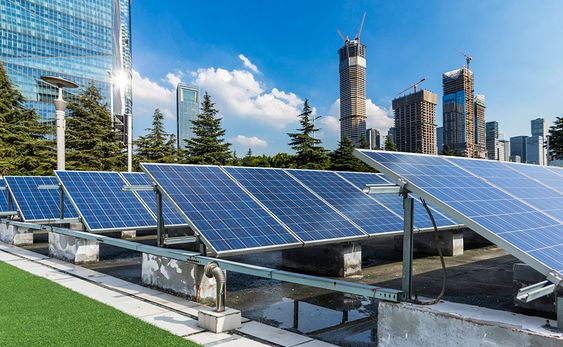Several points to note for small solar off-grid systems
 Jan 13,2022
Jan 13,2022

 Rekesun
Rekesun
The installation and use of small solar off-grid systems have become very common, which can not only be green and environmentally friendly, but also solve the problem of electricity consumption in remote areas without electricity. The solar off-grid system converts solar energy into electrical energy, and stores the electrical energy inside the battery through the controller. The electrical energy stored in the battery is converted into electricity by the controller.

Generally, the most commonly used electricity for residents is the small solar off-grid system. Although the design and installation of this small off-grid system is simple, it is a job with relatively high technical requirements. In addition to choosing a solar photovoltaic power generation brand with good performance In addition, a professional construction worker is required for installation, so as to ensure the power generation of your photovoltaic power station and avoid potential safety hazards. Here we briefly summarize the following issues that need to be paid attention to when installing the system:
1. Azimuth and tilt angle
In different seasons, the orientation of the solar cell array will be adjusted accordingly to obtain correspondingly larger power generation. In different seasons, the peaks of insolation in various directions will also be different. Generally, when the array is facing due south, the solar cell power generation is the largest. Like the azimuth angle, the constraints on the inclination angle of the roof, the inclination angle of snow falling and drainage, etc. of photovoltaic solar energy should also be considered in the design and installation. It is related to geographic latitude. When the latitude is higher, the corresponding inclination angle is also larger.
2. Avoid blocking
If the photovoltaic solar cell cannot be directly illuminated by sunlight, and only scattered light or local area is used for power generation, the power generation at this time is about 10% to 20% less than that of solar energy without shadows. Therefore, it is necessary to avoid blocking between the panels, including surrounding buildings such as utility poles, trees, and corners of house eaves.

3, the installation of the bracket
The solar photovoltaic bracket is a special bracket specially designed for solar panels by the solar photovoltaic power generation system. The commonly used materials are aluminum brackets, hot-dip galvanized brackets and stainless steel brackets. The stability and firmness of the bracket placement are the most important. It is necessary to use materials with high material strength, corrosion resistance, rust resistance, and strong load-bearing capacity. At the same time, the local meteorological conditions, such as natural environ ment, disaster weather, and storm levels over the years must also be considered. and so on.
4. Design of wiring
Professional installers will carefully design the wiring distance. When wiring, you must pay attention to the distance and the position of the combiner box. In general, the wiring should be as short and average as possible, and the terminals should be firm to prevent virtual connection or disconnection.
5. Battery connection
For the practical application of solar cells, it is necessary to arrange the single solar cells in a certain way, so that the components have a specific output voltage and power. power requirements. The terminal of the battery should be firm, and attention should be paid to the polarity during installation to avoid explosion and fire. It is best to find a professional installer for installation and connection.
6. Controller
Although the controller generally has corresponding power distribution protection measures, it is necessary to pay attention to prevent reverse polarity, short circuit and other phenomena during the wiring process to avoid unnecessary trouble. If your controller is not waterproof, you must pay attention to the angle and location when choosing to place it to avoid rainwater immersion.
7. Inverter
The main function of the solar inverter is to invert the DC power of the battery into AC power. Through the full bridge circuit, a sinusoidal AC power that matches the lighting load frequency and rated voltage is obtained for the end user of the system. When connecting the inverter, it should be connected to the positive and negative poles of the battery, not to the output terminal of the controller. Generally, the output terminal of the off-grid controller is DC output by default, and the built-in protection is also for DC load. Since the inverter will be unstable with AC load, it is recommended to connect it to the battery, and also need to load necessary power distribution protection. to ensure system security.
The installation site of each small solar off-grid system project has different requirements for the products used in the system. The designers generally fully consider the geographical environment and the needs of users to select products, and then carry out reasonable design. Professionals must not follow other models to rigor, so as to avoid unnecessary losses caused by improper installation.



 Home
Home Classification of solar photovoltaic brackets?
Classification of solar photovoltaic brackets? 







 syplighting.en.alibaba.com
syplighting.en.alibaba.com



